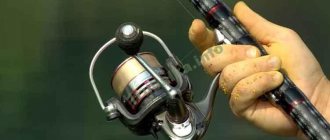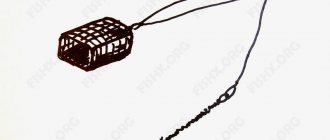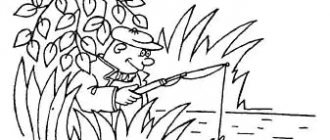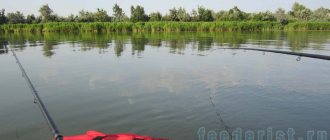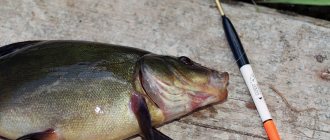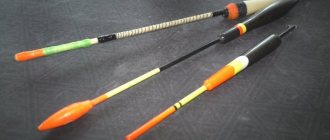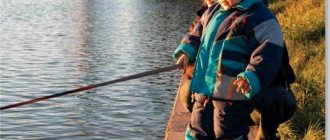Wiring fishing is one of the most catchy, allowing you to use all the advantages of an ordinary float rod, combining them with various techniques. This method has been known since ancient times and was described in the works of L.P. Sabaneeva. Today, the technique has undergone several improvements and can be divided into two main types:
- relatively recently appeared fishing using a Bolognese fishing rod;
- the classic method using an ordinary blind or sliding float.
In both cases, the bait is not in one place, i.e., it is not static, but moves in the layers of water under the influence of the current, which gives its appearance a greater degree of naturalness. Coupled with the fact that the tackle also covers a large area of the reservoir, the chances of successfully catching peaceful fish increase significantly.
Equipment for fishing with Bolognese
Unlike widespread methods, the Boloness rig allows fishing at significantly distant distances in deep water bodies. So, for example, when using a rod with a length of only 4 meters, it becomes possible to conduct wiring at a distance of 20 meters from the shore in places with a depth of up to 3.5 meters. If the size of the blank is increased to 5 - 8 meters, the casting distance further increases by 10-20 meters and becomes equal to 30-40 meters, while the bait can be buried up to 7 meters.
In addition to the main requirement for the form, which is that its length should not be less than 4 meters, it is worth remembering that this method of fishing requires you to always hold the rod in your hands, so it should be as light and balanced as possible.
Gear made of carbon fiber or composite materials has these qualities. Reels are installed depending on the preferences of the fisherman, both inertial and non-inertial. Naturally, this will also affect the wiring technique.
Choosing a fishing spot
Let's start by choosing a fishing spot. For effective fishing, you need to choose a place where there are no hanging trees nearby that will interfere with casting the equipment. Having found such a place, you can begin to measure the fishing spot.
To do this, you need to cast the equipment at different distances, adjusting the depth so that the nozzle drags along the bottom. You can determine this moment by constantly increasing the fishing depth. At the moment when the float falls, you need to lower it to a distance equal to half the length of the leash.
Thus, when throwing the equipment at various distances, you need to study the fishing location. This way you can find out exactly in which places there are hills or holes, and in which exact place to expect a bite. When measuring the depth, place the bait on the hook, perhaps you will find a school of fish, in this case you can postpone the measurement and proceed to fishing.
Tackle with an inertia-free reel
Today this is the most popular rigging method, because reels of this type have a number of advantages:
- wide range, and therefore greater availability;
- good casting accuracy with a relatively simple technique;
- a large selection of gear ratios and number of bearings, allowing you to select gear with the required reeling speed;
- the ability to use several spools with fishing line of the required diameter at once;
- The friction brake system reduces the likelihood of the gear breaking in the event of catching a trophy specimen.
Expert opinion
Alexander Petrovich
participant of the Russian Championship in fishing with a float rod
One of the significant disadvantages is that when using an inertia-free reel, the smoothness of the fishing line must be regulated by holding it with your finger on the edge of the spool. With this method, it is quite difficult to avoid delays and achieve ideal uniformity in wiring. As a result, potential prey becomes wary, since the fish is accustomed to the fact that its food floats smoothly with the current, without jerking.
A partial solution to this problem is achieved by incorporating rod assistance into the fishing technique. This is done as follows:
- the rod blank is shifted to the side in the direction of the flow until the whip moves a couple of meters;
- two meters of fishing line are unwound from the spool, and the rod returns to its original position;
- Once tension is achieved, the operation is repeated the required number of times.
Of course, it will still not be possible to completely avoid uneven wiring. It should also be taken into account that while the float is passing over the baited area, where a bite is most likely, it is necessary to keep the tackle taut so that it is possible to carry out a confident hook.
Advantages of reeling fishing
There are several ways to catch fish in the current. Wire fishing provides the angler with a number of advantages.
- The main advantage of float gear on the river is the realistic presentation of the bait. A hungry fish sees prey swimming nearby and greedily grabs it. A large number of different species of fish are concentrated in the baited area, which increases competition and leads to confident bites.
- Float tackle is highly sensitive. When biting, the fish does not feel the weight of the sinker or the resistance of the rod tip. Therefore, the bait often ends up in the fish’s throat.
- Retrieving fishing can take place both close to the shore and at a distance of up to 20 m. This allows you to hunt for cautious large fish that are afraid to approach the coastline.
- Since the wiring is carried out within 10-60 seconds, with an active bite, it is possible to fill the cage with fish in a couple of hours.
Fans of passive fishing may not like constant work with a fishing rod. And if the rod is heavy, then the hand quickly gets tired, forcing the floater to pause to rest.
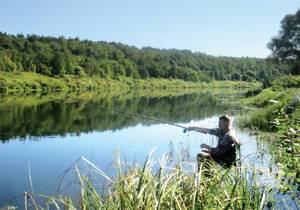
Photo 1. The fishing rod practically does not let go of your hands.
Tackle with inertial reel
Very often, inertial reels are positioned as “wiring” reels, which is not surprising, since using them you can achieve high-quality, uniform retrieving without the help of a rod blank. Unlike an inertia-free reel, the line is released from the drum, which is held with a finger with the necessary force. This eliminates jerking, and the equipment floats with the flow, forming a gentle arc. In case of a bite, it is also convenient to hook, and this is done instantly without wasting time on closing the arc of the line laying mechanism.
There are various inertial-type reels for fishing with wires. The most popular and suitable for this type of fishing is “Nelma”. Its design advantage is a low-mass drum, with which light equipment can be used. The optimal coil diameter is 10-12 cm.
The speed of retrieving line from the water for inertial reels is lower than for inertial reels. But to increase this indicator, you can use the high-speed reeling technique, which works if there is no fish on the hook.
To do this you need:
- use the rod to tighten the entire equipment and return it to its original position;
- quickly, before the tackle has time to be stretched by the current, spin the drum, which will rotate very quickly, without experiencing the resistance of the fishing line;
- repeat until the line is completely selected.
Recommended reading: For the loot
It should be noted that for wiring tackle, an inertial reel is the best choice, since it allows you to regulate the speed of the tackle only by pressing your finger, or by accurately adjusting the mechanical brake. In the latter case, finger braking is done only at the necessary moment.
Ring for security
I attach the float with three silicone rings on the main fishing line. Actually, two rings would be enough to secure the float. The third ring is for reliability, in case one ring breaks or gets lost. The float load is classic English. The main sinker consists of a chain of explosive pellets (0.4 g). It is convenient to clamp them on the fishing line even by hand without special pliers, which are necessary when installing smaller pellets. It is important that the cuts of the pellets face the same direction. Otherwise, the main line will twist slightly and overlap when casting will be ensured. In addition to the chain of pellets, I attach two more BB pellets to a leash about 60 cm long, which can be moved as desired if desired. An accessory I can't resist, especially on sunny days, are polarized sunglasses. Only with their help can you still see the small head of the float at a great distance without “shedding tears,” especially against the sun. Fishing with a free float release is attractive to me because of its constant uncertainty. I never know what I'll have on the hook next. Even brown trout can sometimes be tempted by a drifting bunch of maggots.
I recommend to read:
Magic foam balls
Catching pike with gold silicone fish
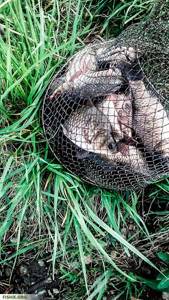
Share with your friends!
Some subtleties
Floats for wiring equipment are used in the form of a drop, equipped with a fairly long keel. If fishing involves the active use of the technique of periodically holding the reel drum, then the Carlusso Bolo float will be the optimal choice. Its shape resembles a concave spoon, as a result of which, during a sharp stop, the transverse force of the water flow acts on it minimally and it does not move towards the shore. The fishing line is selected according to the principle, the thinner the better, since it is necessary to minimize the impact of wind and the windage of the gear. To do this, you need to know well the features of the reservoir and the size of the intended trophy.
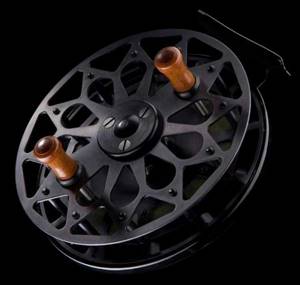
How to catch
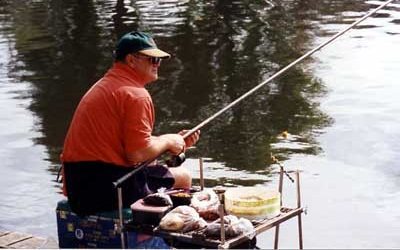
This method of float fishing is based on the force of the current, which carries the bait down the river. The bait moves near the bottom, and may even drag along it. If you manage to carry out the wiring in the baited path, then the fish will not notice the catch.
We suggest you familiarize yourself with: Fishing knots for leashes – viberilodku
Despite its apparent simplicity, fishing in the current presents a lot of problems for beginners. Experts recommend following the following instructions.
- When choosing a place for fishing, you should give preference to clean banks without overhanging tree branches and thickets of bushes or reeds.
- The current should be stable at a distance of 5-10 m, and the depth throughout the fished area should fluctuate within 1.5...2.5 m.
- The bottom should be free of dense thickets of grass, thick algae and snags.
- It is advisable to choose a position so that the wind is from the back and does not affect the equipment.
- The float is installed so that the hook floats 1 cm from the bottom or periodically touches the bottom surface.
- Small portions of bait are thrown in the same rhythm as bait casts.
- During fishing, the line must be adjusted so that it stretches into a straight line connecting the float and the tip of the fishing rod.
- The hook must be done quickly but smoothly.
Attention! When hooking correctly, the float should be slightly pulled out of the water.
Shore fishing with wiring
As the name implies, fishing a reservoir with this method is carried out along the coastline. A significant role in the area of accessible water area will be determined by the length of the selected fishing rod, and it should be mentioned once again - the choice must be made optimal, the size of the blank should not be to the detriment of its weight and balance, since the butt part will always be in the hands. Traditionally, the choice is made in favor of rods with a length of five to seven meters. The widest range in this range is represented by Bolognese equipment, so the choice will most likely have to be made from these. It’s good to have a reel with you right away so you can install it on the form to check the balance and ease of maneuvering.
When fishing in a current from the shore, long casting is not required at all, therefore, as mentioned above, it is best to use a regular inertial reel. Its main advantages are that the fishing line does not twist when retrieving, the controllability of the tackle increases significantly, and due to the high inertia, the hooking is instantaneous. The position of the rod during fishing is selected in such a way that the reel is located in a horizontal position, with the reel facing up. To do this, hold it at the bottom with your index finger, while the phalanx of the thumb is placed on the rim of the drum so that you are always ready to press it if necessary.
It was already mentioned above about choosing the optimal diameter of the reel; it ranges from 10 to 12 cm. This is due to the fact that when using a drum that is too small, the inertia is low and much more effort is required to rotate it. This is fraught with an increase in the mass of the equipment and a decrease in its sensitivity in general. Otherwise, too much inertia also has a bad effect, leading to uncontrollability of the tackle and frequent derailments due to too powerful notching, because the fish's lip simply breaks.
Old reels of the “Nevskaya” type, the production of which, by the way, has now been restored, have proven themselves to be very good when fishing in the current. Representatives from around the 70s, however, lack rolling bearings and have a footrest that is not compatible with modern reel seats. These problems can be easily eliminated, since the leg can be sharpened on an emery wheel, and a special lubricant can be added to the sliding bearing system; the one used in a car hub (for example, blue Mannul) is very suitable. Once finely tuned, the coil will work properly for a very long time.
These steps are done as follows:
- the coil is disassembled, the old lubricant is completely removed from all mechanisms;
- Apply lubricant to the axle using a stick and rub evenly;
- a little lubricant is also added to the drum hole;
- the drum is put on the axle, after which the drum location is adjusted using a screw adjustment so that when the brake is released, the stopper is located in the middle part of the groove and does not come into contact with the axle.
After all the manipulations, if you blow on the surface of the drum, it should rotate freely.
It is much more advisable to use a float with a blind mount in the equipment, since the depth in the fishing zone from the shore in most cases is less than the length of the rod; this solution will make the entire equipment more manageable. Also, due to the shallow depths when fishing with a wire, a high speed of immersion of the bait is not required, therefore, the float can be used with a low load capacity, which increases its sensitivity. Of course, specific indicators are directly dependent on how accurately the coil is tuned; on average, it is recommended to use within 4 grams.
The length of the fishing area depends on specific coastal conditions (vegetation, soil conditions, etc.), as well as on how far the plume of the feeding mixture will stretch. You should carefully study the nature of the bottom of the reservoir and, if possible, minimize the number of obstacles in the path of a hook dragging along the bottom, which can provoke hooks and, as a result, false bites.
We recommend reading: Catching perch with a balance beam in winter
In order to determine the topography of the bottom soil, you can use a proven method:
- without securing the leash to the micro-swivel, move the sinkers towards it, and set the float to the approximate depth value; • make test wiring;
- in the event that the tackle did not catch on the unevenness of the bottom, it is necessary to increase the depth of the float by about 10 cm, otherwise reduce it and repeat the second step;
- by successive iterations, find the optimal depth at which the hook will pass near the bottom, but not catch it;
- Place the sinkers in their places, attach a leash no more than half a meter long to the swivel, this is enough to compensate for differences in bottom heights.
The bait casting point is chosen so that after casting the tackle is in working position by the time it reaches this place. The bait itself should be well washed out by the current and completely distributed over the area being fished. Balls with bait mixture are thrown manually along a parabola, which is achieved by moving from bottom to top.

Float
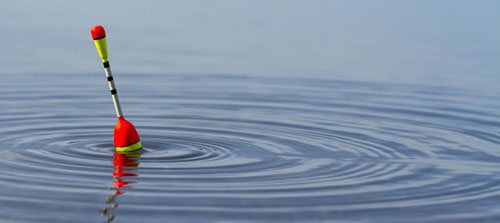
Wiring floats should have an elongated spindle-shaped body and a long antenna painted in contrasting colors, clearly visible from a distance. The lower loaded part of the float should, on the contrary, be painted in soft colors that conceal the float. The float must have a sliding attachment to the fishing line - at the bottom of the float there is a ring through which the fishing line is passed. Movement and depth adjustment is carried out thanks to two stoppers located on the fishing line on both sides of the float, which, if necessary, move freely along the fishing line, changing the fishing depth, and at the same time prevent the float from slipping past them.
